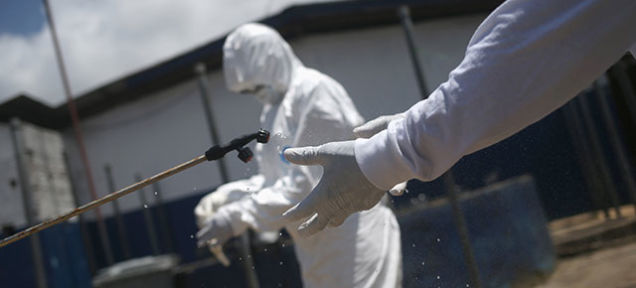The US government is looking into ways to use robots to save lives from the Ebola virus. Robots may not have feelings, but they have amazing immune systems, and experts have already pinpointed nine possible ways to put them to use.
On November 7, the White House Office of Science and Technology Policy will hold workshops looking at how robotics can assist in Ebola outbreaks. These workshops will be held at Texas A&M, Worcester Polytechnic Institute, UC Berkeley, and in Washington.
While the idea of deploying robots sounds kinda far-fetched (like deploying a team of oil riggers to defeat an asteroid, even) it really makes a lot of sense. People are catching Ebola because they are exposed to contagious people or contaminated bodies. Minimising the amount of contact aid workers have by using robots for tasks is a smart move.
Director of Texas A&M’s Center for Robot-Assisted Search and Rescue (CRASAR) Robin Murphy laid out a number of different possible robot jobs in a blog post about the upcoming workshops:
- Mortuary robots to respectfully transport the deceased, as ebola is most virulent at the time of death and immediately following death
- Reducing the number of health professionals within the biosafety labs and field hospitals (e.g., automated materials handling, tele robotics patient care)
- Detection of contamination (e.g., does this hospital room, ambulance or house have ebola)
- Disinfection (e.g., robots that can open the drawers and doors for the commercially available “little Moe” disinfectant robot)
- Telepresence robots for experts to consult/advise on medical issues, train and supervise worker decontamination to catch accidental self-contamination, and serve as “rolling interpreters” for the different languages and dialects
- Physical security for the workers (e.g., the food riots in Sierre Leone)
- Waste handling (e.g., where are all the biowaste from patients and worker suits going and how is it getting there?)
- Humanitarian relief (e.g., autonomous food trucks, UAVs that can drop off food, water, medicine, but also “regular” medicine for diabetes, etc., for people who are healthy but cut off)
- Reconnaissance (e.g., what’s happening in this village? Any signs of illness? Are people fleeing?)
This list is ambitious, but there are already examples of robots that have done this kind of work in the past. As DefenseOne pointed out, there is already a body-disposal robot in Japan.
For stuff like reconnaissance and telepresence, it’d be easy enough to retrofit existing robots. And for disinfecting, as Murphy mentioned, there’s already a robot used by hospitals called “Little Moe” that uses a Xenon bulb to zap bacteria and viruses — and it was used in Dallas for Ebola patients.
But when it comes to the medical crisis itself, it will be difficult to create robots capable of doing a doctor’s job.
“As was the case in Fukushima, the Ebola crisis in Africa has revealed a significant gap between robot capabilities and what is needed in the realm of disaster relief and humanitarian assistance,” Gill A. Pratt, a roboticist and program manager at the federal Defence Advanced Research Projects Agency, told the New York Times. “We have a moral obligation to try and select, adapt and apply available technology where it can help, but we must also appreciate the difficulty of the problem.”
So machines won’t be able to destroy Ebola. But following these workshops, there’s a good possibility that robots will be conscripted in the fight against the violent virus. [Defence One]
Picture: John Moore/Getty Images
